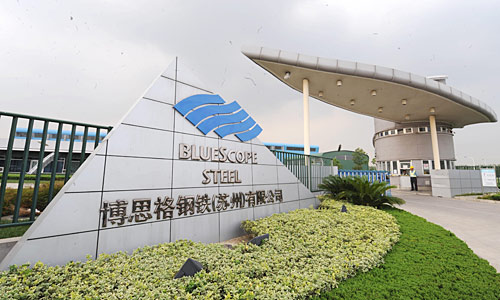|
 |
|
NEW HOME: BlueScope Steel, the leading steel company in Australia and New Zealand, has set up a factory in Suzhou Industrial Park, Jiangsu Province. The park is home to over 3,000 foreign-invested enterprises (CHEN QI) |
The year 1992 marked major shifts in both the China strategy of attracting foreign investment and multinationals' investment strategies in China, said Wang Zhile, a researcher on multinational corporations, in his report on multinationals and China's three-decade reform and opening up.
China seized the opportunities when multinationals relocated their factories worldwide, thanks to China's decision to establish a socialist market economy in 1992, said Wang.
After 1992, trailblazer multinationals began to expand their investments in China and many countries' top 20 industrial companies set up factories in China, investing in more and bigger projects. During the second period (1992-2001), China attracted $370.2 billion FDI in total.
China's entry into the WTO in 2001 marked a milestone in China's reform and opening up, and also turned a new page for FDI in China, said Wang in the report. Paid-in FDI in China stood at about $561.75 billion from 2002 to 2009, according to MOFCOM statistics.
Diversity
In the past decade, multinationals increased and diversified their investments in China, investing in R&D, product design, and services such as logistics, marketing, wholesale and retail trade, banking and insurance, according to Wang's report. They also invested in fundamental industries such as core raw materials and parts for their productions in China.
By the end of 2007, multinational companies had established more than 1,200 R&D centers, mainly in Beijing, Shanghai, Tianjin, Jiangsu and Guangdong. The R&D technical service sector attracted FDI of $917 million in 2007, up from $57 million in 2000, said MOFCOM statistics.
"Large multinationals, especially Fortune 500 companies, have been establishing more or upgrading their R&D in China into global R&D centers in recent years," said Du Debin, dean of city and regional economics with Shanghai-based East China Normal University in a China Business News report.
Multinationals' investments in their China R&D centers had increased 33.3 percent annually between 2004 and 2006, Du said, citing MOFCOM statistics from a survey on 75 multinationals.
|
